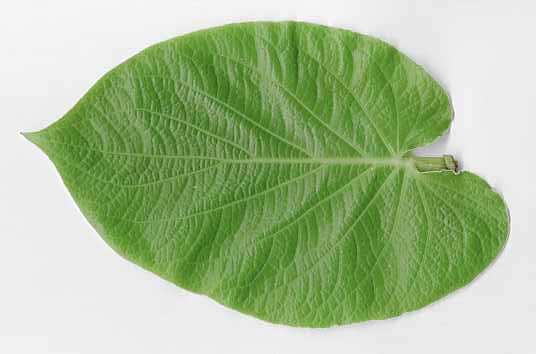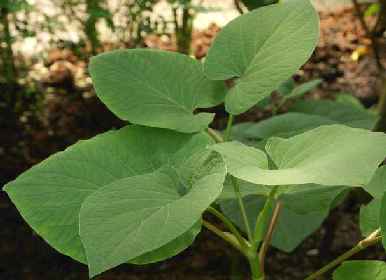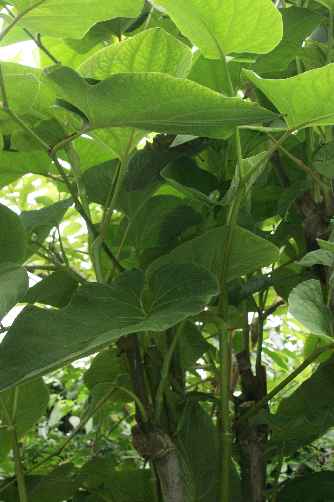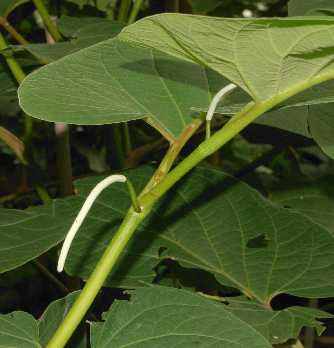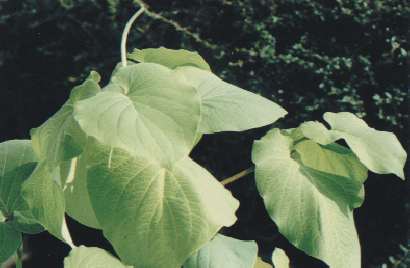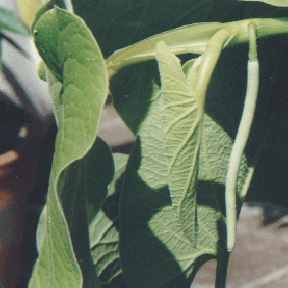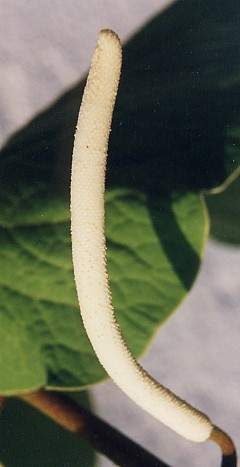
|
| Erect, fully opened inflorescence of Mexican Pepper |
| ||
|
The spice is much used in the cuisines of tropical México. The leaves
are a fragrant decoration or can be wrapped around some stuffing and steamed,
baked or broiled. A famous recipe from the Veracruz province (where the spice
is particularly popular) is Pescado en Hoja Santa, fish
wrapped in pepper leaves, baked and served with a spicy tomato sauce.
In Central México, pepper leaves are used to flavour chocolate drinks
(Aztecs’ chocolate
, see Vanilla).
Last, Mexican pepperleaves are an essential ingredient for
mole verde,
one of the famous seven sauces of Oaxaca
(los siete moles,
see paprika about mole in
general and sesame about mole Poblano).
Mole verde
Two Asiatic relatives of Mexican Pepper also have fragrant leaves and find some culinary use.
The first is betel pepper (Piper betle) whose large, astringent leaves are employed all over South and
South East Asia for the famous betel bit; I do not know of any other use. The smaller and milder leaves of
Piper sarmentosum are known in Thailand as
cha phlu [ช้าพลู]
and in Vietnam as la lot [lá lốt]; they are commonly used as wrappers for small bits of
steamed meat or vegetables.
